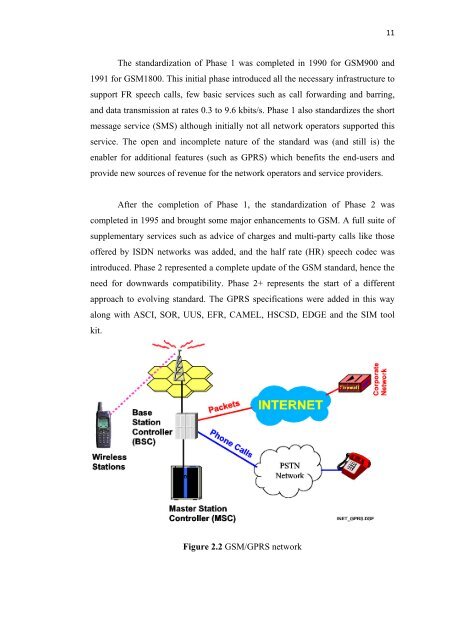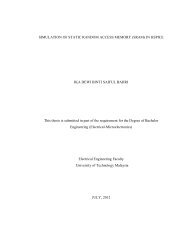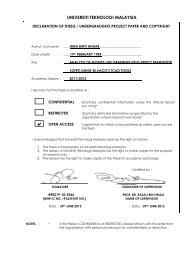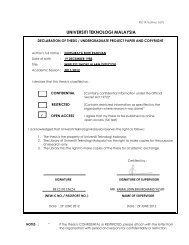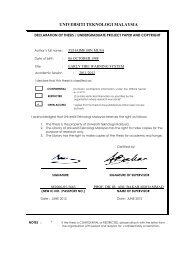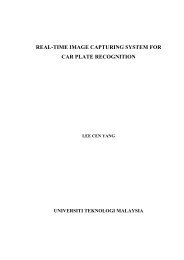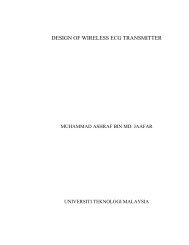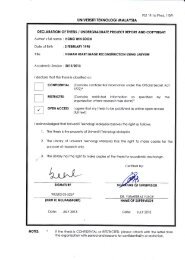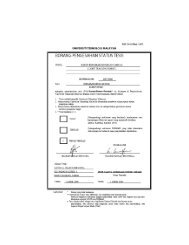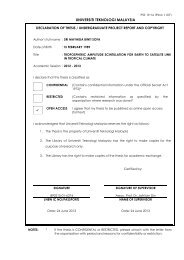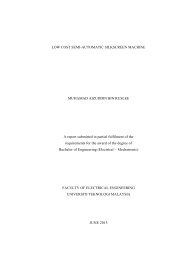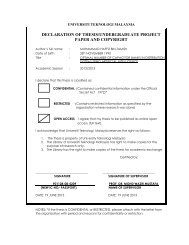UNIVERSITI TEKNOLOGI MALAYSIA - FKE - UTM
UNIVERSITI TEKNOLOGI MALAYSIA - FKE - UTM
UNIVERSITI TEKNOLOGI MALAYSIA - FKE - UTM
You also want an ePaper? Increase the reach of your titles
YUMPU automatically turns print PDFs into web optimized ePapers that Google loves.
11The standardization of Phase 1 was completed in 1990 for GSM900 and1991 for GSM1800. This initial phase introduced all the necessary infrastructure tosupport FR speech calls, few basic services such as call forwarding and barring,and data transmission at rates 0.3 to 9.6 kbits/s. Phase 1 also standardizes the shortmessage service (SMS) although initially not all network operators supported thisservice. The open and incomplete nature of the standard was (and still is) theenabler for additional features (such as GPRS) which benefits the end-users andprovide new sources of revenue for the network operators and service providers.After the completion of Phase 1, the standardization of Phase 2 wascompleted in 1995 and brought some major enhancements to GSM. A full suite ofsupplementary services such as advice of charges and multi-party calls like thoseoffered by ISDN networks was added, and the half rate (HR) speech codec wasintroduced. Phase 2 represented a complete update of the GSM standard, hence theneed for downwards compatibility. Phase 2+ represents the start of a differentapproach to evolving standard. The GPRS specifications were added in this wayalong with ASCI, SOR, UUS, EFR, CAMEL, HSCSD, EDGE and the SIM toolkit.Figure 2.2 GSM/GPRS network


